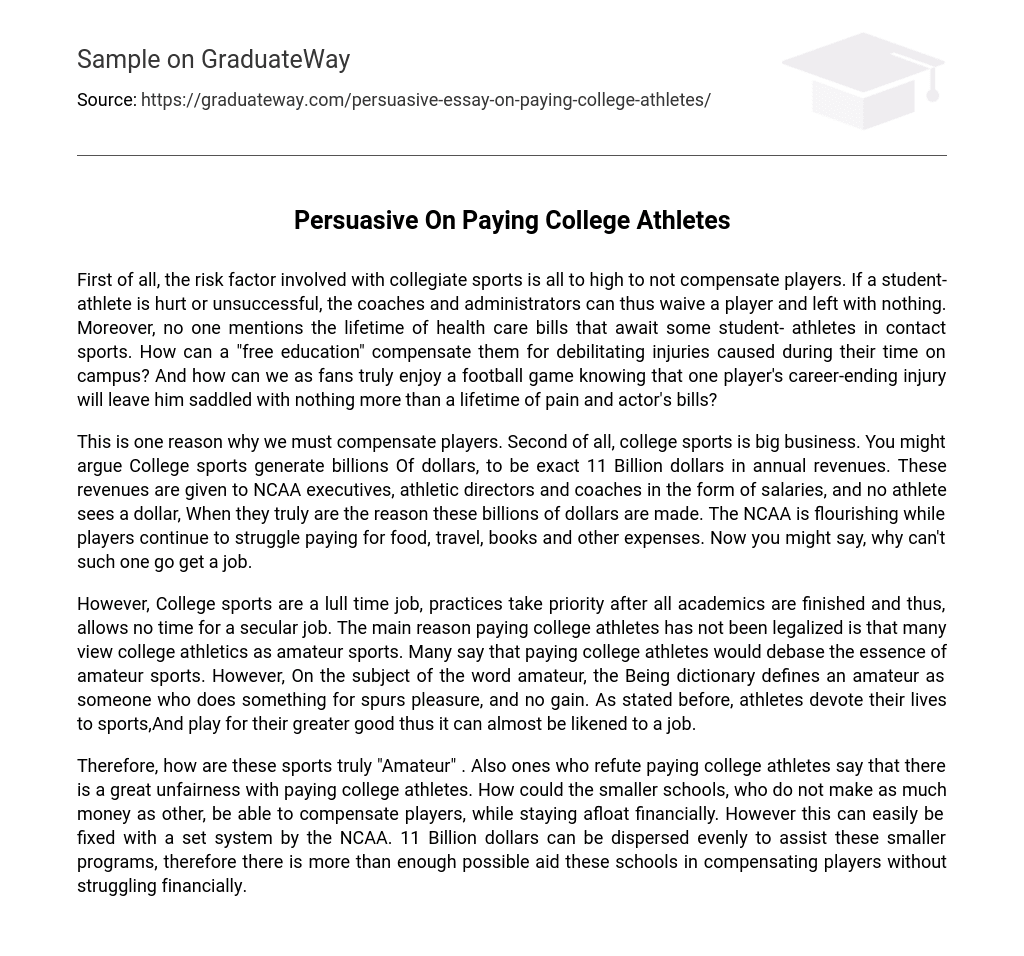Compensating collegiate players is essential due to the high risk involved in sports. If a student-athlete is injured or unsuccessful, they can be waived by coaches and administrators, leaving them with nothing. Additionally, the long-term healthcare expenses faced by some contact sports athletes are often overlooked. A “free education” cannot adequately compensate them for debilitating injuries suffered during their time on campus. As fans, it is difficult to truly enjoy a football game knowing that a player’s career-ending injury will result in a lifetime of pain and medical bills.
This is one reason why it is essential to compensate players. Additionally, college sports is a significant industry. It can be argued that college sports generate billions of dollars, specifically 11 billion dollars in annual revenues. However, these revenues are allocated to NCAA executives, athletic directors, and coaches in the form of salaries, while the athletes who are the true reason for generating these billions of dollars receive no compensation. Consequently, players continue to face financial difficulties in covering expenses such as food, travel, books, and other essential needs. One might question why these individuals cannot seek employment in order to overcome these financial burdens.
However, college sports are essentially a full-time job. Practices take priority once all academic responsibilities are completed, leaving no time for a secular job. The primary reason why paying college athletes has not been legalized is because many perceive college athletics as amateur sports. People argue that compensating college athletes would compromise the fundamental nature of amateur sports. Nevertheless, the term “amateur” defined by the Being dictionary refers to individuals who engage in activities purely for pleasure without expecting any monetary gain. As previously mentioned, athletes dedicate their lives to sports and play for the betterment of themselves and their team, which can be deemed as akin to having a job.
Therefore, one may question the true nature of these sports being considered “Amateur”. Additionally, opponents of paying college athletes argue that it would create an imbalance and unfairness within the system. The concern is that smaller schools, which do not generate as much revenue as others, would face financial challenges in compensating their players. However, this issue can be easily resolved through the implementation of a structured system by the NCAA. By evenly distributing the 11 billion dollars, it would be possible to provide assistance to these smaller programs and allow them to compensate their players without experiencing financial struggles.





